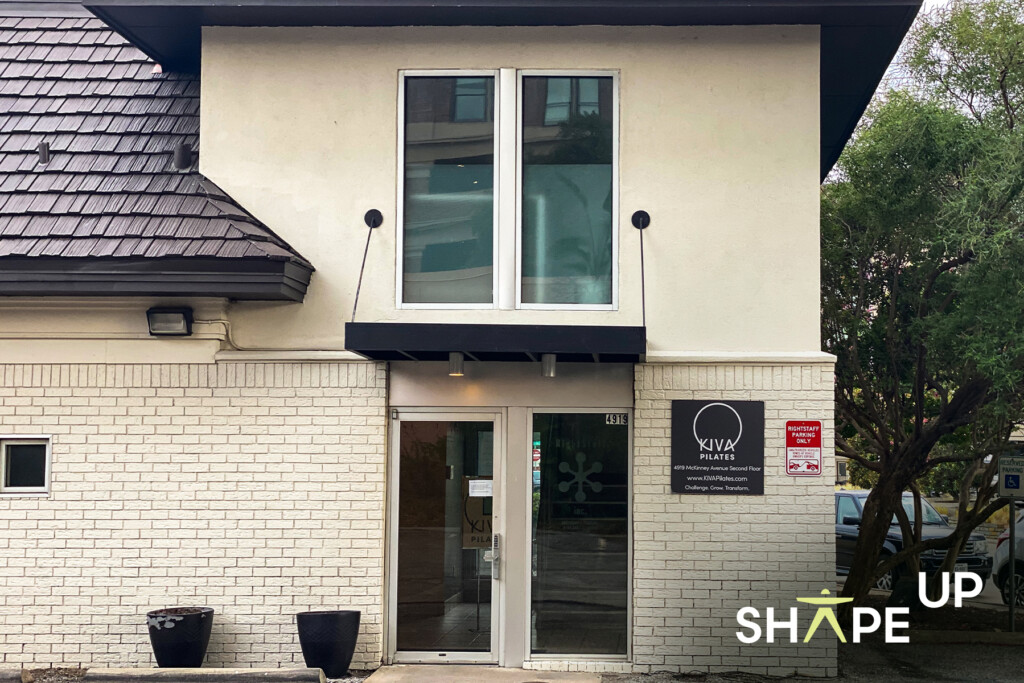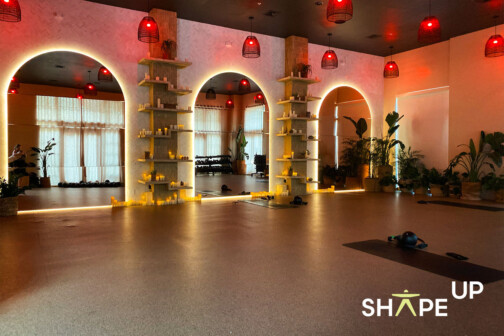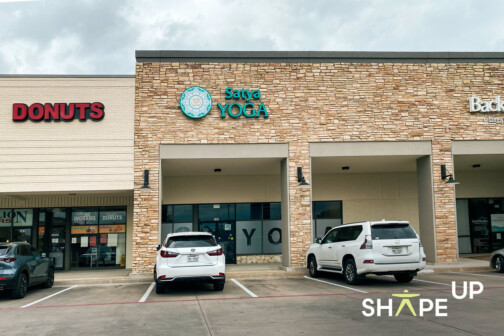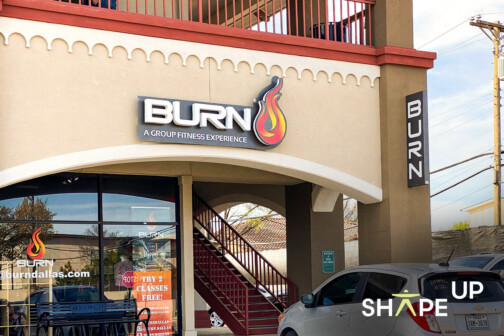I learned quickly that reformer Pilates and I don’t mix. But, considering Dallas has no end to its Pilates studios, I decided to try a mat-based class. It was surprising difficult, though, to find non-reformer offerings. So, I opted for a “tower” class at Kiva Pilates in Knox-Henderson.
Kiva Pilates is on the second floor of an older building on McKinney Avenue. I couldn’t find an elevator, so I climbed the stairs. My class was in an airy, attic-like studio with giant photos of cacti, lots of windows, a small neon sign, and cushy gray mats. There were nine stations, and each had a “tower”— a wooden ladder with rungs and long springs coils with handles hooked to them.
When I checked in, I briefly explained my disability and my last Pilates experience to the instructor. She suggested individual classes as a better way to get familiar with Pilates then asked about modifications. I said I was familiar with my limitations, so throughout the class she mostly trusted me to do what I was capable of. She checked on me, but I wasn’t ever in any danger during the workout.
Our core was at the core (sorry) of this class. We rolled up and down on our backs, using momentum and strength. Later, we reversed the motion—lying in a yoga cobra position, legs lifted behind us. The instructor had us lift our hands, fall forward, then catch ourselves before our heads hit the grounds. My arms aren’t strong enough to catch myself—I have the hospital bills to prove it—so I stayed in cobra.
We did plenty planking, pushups, downward dogs, and leg extensions/lifts. We often sat with our legs piked up and we’d also scissor our legs back and forth. At one point while lying on our backs, we held our arms extended off the ground by our side and pumped them up and down in small movements. It was excruciating, and we did 100 reps of them. I found myself having to make many modifications.
Finally, we got to the tower’s springs. There were four: two for arms and two for feet. We lay on our backs and held our arms out against the thick springs’ resistance and continued lower-body exercises. Then we switched to the leg springs. When I first slipped my feet into the loops (near the heel of my foot, not the ball), I thought, great, I can do this. This might actually be easier than the arms. I was wrong.
We did a lot of the same movements as before, like piking and tabletop. My body protested the whole time and my foot charley horsed. When we flipped onto our stomachs, the regular next to me groaned. While in that position, we lift our knees just off the ground (well, I didn’t, I couldn’t), and then we curled our shins in toward our bottoms against the resistance—this was hard. By the end, we all needed a good hamstring stretch.
For our last spring movements, we stood and switched back to arms. We extended our arms in front of us. We leaned forward so that we were at a 30 to 40-degree angle toward the ground and we had to rely on arm strength to keep us from faceplanting. From here, we did various arm press movements. I could do a version of these, and I enjoyed them.
As we went, the instructor put care into reminding us to be aware of our spines and backs, and make sure we were keeping them flat on the ground. As someone with scoliosis, I was glad for the reminder. She’d also quiz us on each move’s reformer counterpart. At one point, we had our legs bent in tabletop, then would extend them out. This is a squat, the instructor told us, and I grimaced in recognition. But I liked that I could get all the benefits of a reformer class without the drawbacks.
I was sore for a few days after this class. I liked it much better than the reformer. The tower is clearly more stable than a megaformer, but you still need a base level of strength to do the class. Despite this, the instructor was clearly friendly and familiar with the regulars, which was nice to see.
Final Thoughts
Aesthetics
While some of the art in this studio looks like the Pier 1 decor I bought for my first apartment, I liked the attic vibe here. It was light and airy, but unlike an attic, the temperature was very cool—great when you start sweating.
Difficulty
The class was hard. Most of the moves I had to modify or just flat out not do. But many of the other students were in the same boat as me, I felt. And the instructor did all the exercises with us, commiserating on the more painful moves.
Accessibility
For the most part, I appreciated that the instructor let me modify on my own. While help is always nice, sometimes I just want to be left alone to do what I can. However, it is tricky to find an elevator for this second-floor studio.
The Cost of It All
A single drop-in class is $35, and class packs start at $160. Memberships are month-to-month, but you get unlimited classes. A two-week trial is $99, and the normal membership is $219 a month. The studio also offers private sessions, dual-instruction, and pre- and post-natal classes.
Would I Go Back?
I’d consider it, but I don’t think Pilates is for me.
Get the AtHome Newsletter
Author






